Analysis of the Annunciation by Leonardo Da Vinci Connection to the Renissance Themes in Art
Religious themes in art accept prevailed throughout time. Whether it is Catholicism, Judaism, Islam, or Hinduism - being able to visually collaborate (through images or text) with the religious messages is an important attribute to many religious followers effectually the globe, and throughout history. Furthermore, The Proclamation in Medieval and Renaissance Christian art is evident of this idea.
Art and the Church:
The early creative movements centered around the Church: This was for many reasons; simply, to speak simply, it was partly because the church had pockets deep plenty to fund this, therefore being in control of creating the narrative. (In one case fine art became more than available to the public outside of the church building walls and humanism began to grow, religious themes were slowly mixed with secular fine art). The visual narrative helped the church to bring in non-believers and followers, akin, who may non accept had access to the Biblical texts or even knew how to read Latin. (More than people meant more money for the Catholic Church building because they could collect money from selling "indulgences," a way for the people to pay their style out of their sins). [caption id="attachment_15276" align="aligncenter" width="415"]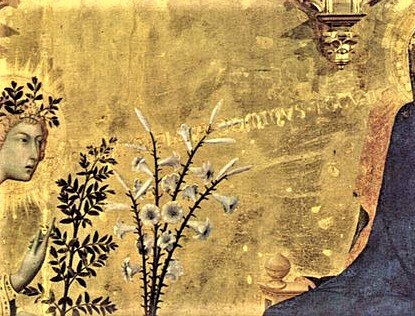 Simone Martini, detail of text in the Annunciation with St. Margaret and St. Ansanus, 1333, Uffizi Gallery, Florence, Italia[/caption] Religiously themed artworks - ranging from Dürer's engravings of Adam and Eve, to Medieval representations of David or Christ on mosaics and tomb walls, to Giotto's Biblical narrative (i of my personal favorites!) in the Scrovegni Chapel - physically represent the array of Biblical figures and allow us to peradventure connect, spiritually, to a higher being. [caption id="attachment_15265" align="aligncenter" width="708"]
Simone Martini, detail of text in the Annunciation with St. Margaret and St. Ansanus, 1333, Uffizi Gallery, Florence, Italia[/caption] Religiously themed artworks - ranging from Dürer's engravings of Adam and Eve, to Medieval representations of David or Christ on mosaics and tomb walls, to Giotto's Biblical narrative (i of my personal favorites!) in the Scrovegni Chapel - physically represent the array of Biblical figures and allow us to peradventure connect, spiritually, to a higher being. [caption id="attachment_15265" align="aligncenter" width="708"]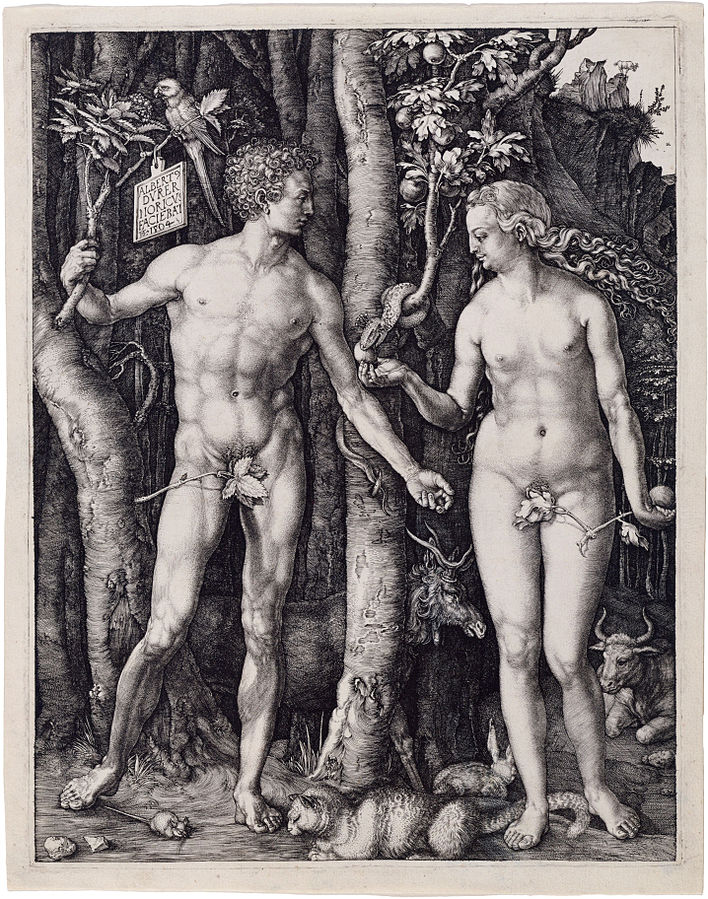 Albrecht Dürer, Adam and Eve, 1504, The Morgan Library and Museum, New York, USA[/caption] [caption id="attachment_15267" align="aligncenter" width="1422"]
Albrecht Dürer, Adam and Eve, 1504, The Morgan Library and Museum, New York, USA[/caption] [caption id="attachment_15267" align="aligncenter" width="1422"]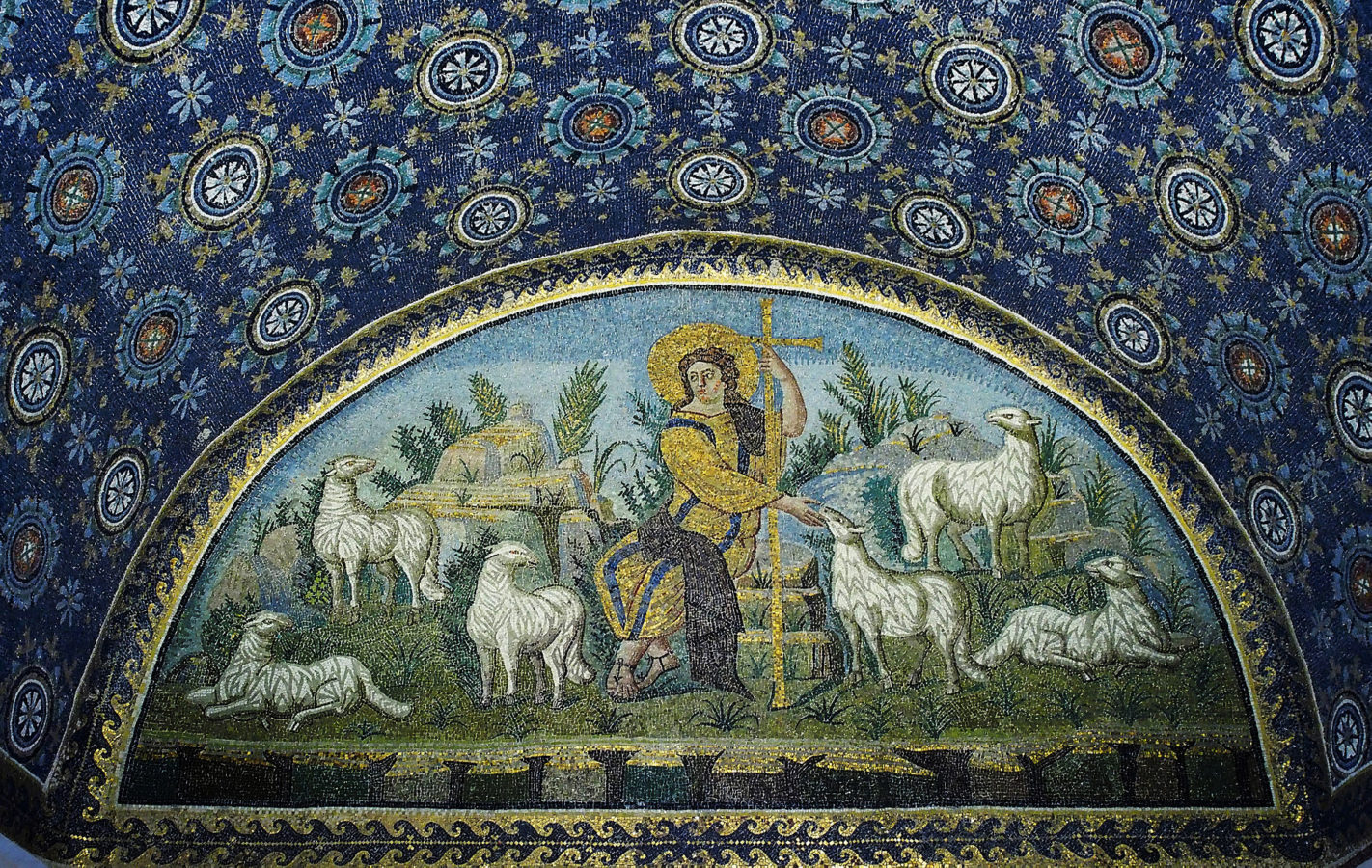 Lunette of the Adept Shepherd, ca. 386-452 AD, Mausoleum of Galla Placidia, Ravenna, Italy[/caption] [caption id="attachment_15268" align="aligncenter" width="330"]
Lunette of the Adept Shepherd, ca. 386-452 AD, Mausoleum of Galla Placidia, Ravenna, Italy[/caption] [caption id="attachment_15268" align="aligncenter" width="330"]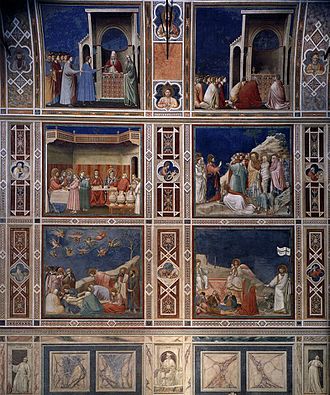 Giotto di Bondone, a section of the narrative in Scrovegni Chapel, ca. 1303-1305, Scrovegni Chapel, Padua, Italy[/caption]
Giotto di Bondone, a section of the narrative in Scrovegni Chapel, ca. 1303-1305, Scrovegni Chapel, Padua, Italy[/caption]
The Annunciation in Medieval and Renaissance Christian Fine art:
Besides the use of Biblical or religious figures, theology besides came into play with Medieval and Renaissance artworks. Quite maybe 1 of the most pop themes of the 5th-17th centuries, brusk of Christ Himself, is The Annunciation. In Biblical scriptures, the angel Gabriel comes to Mary to tell her that she will have a son, Jesus...something which she only briefly questions earlier going along with God'southward plans for her life. Within this theme, artists utilized artistic liberty – triptychs, sculptures, and single-frame narratives are all available for our viewing from this period of time. While they all appear rather similar, each artist's arroyo and technique brings something unique out in each one. This version of The Proclamation is beautiful, is it not? Martini's use of the color gold across the entire slice is perhaps meant to make the audition think of lite, purity, and fifty-fifty hope....all three of which are symbolized in The Annunciation. Even Gabriel and Mary's nimbus, or halo, smoothen with a mystical quality. [caption id="attachment_15271" marshal="aligncenter" width="855"] Simone Martini, segment of Declaration with St. Margaret and St. Ansanus, 1333, Uffizi Gallery, Florence, Italia[/explanation] As the years' progress, there is a noticeable shift away from this extravagant use of gold yet maintaining the nimbus, which changes shape and levels of translucence. [caption id="attachment_15272" align="aligncenter" width="1063"]
Simone Martini, segment of Declaration with St. Margaret and St. Ansanus, 1333, Uffizi Gallery, Florence, Italia[/explanation] As the years' progress, there is a noticeable shift away from this extravagant use of gold yet maintaining the nimbus, which changes shape and levels of translucence. [caption id="attachment_15272" align="aligncenter" width="1063"]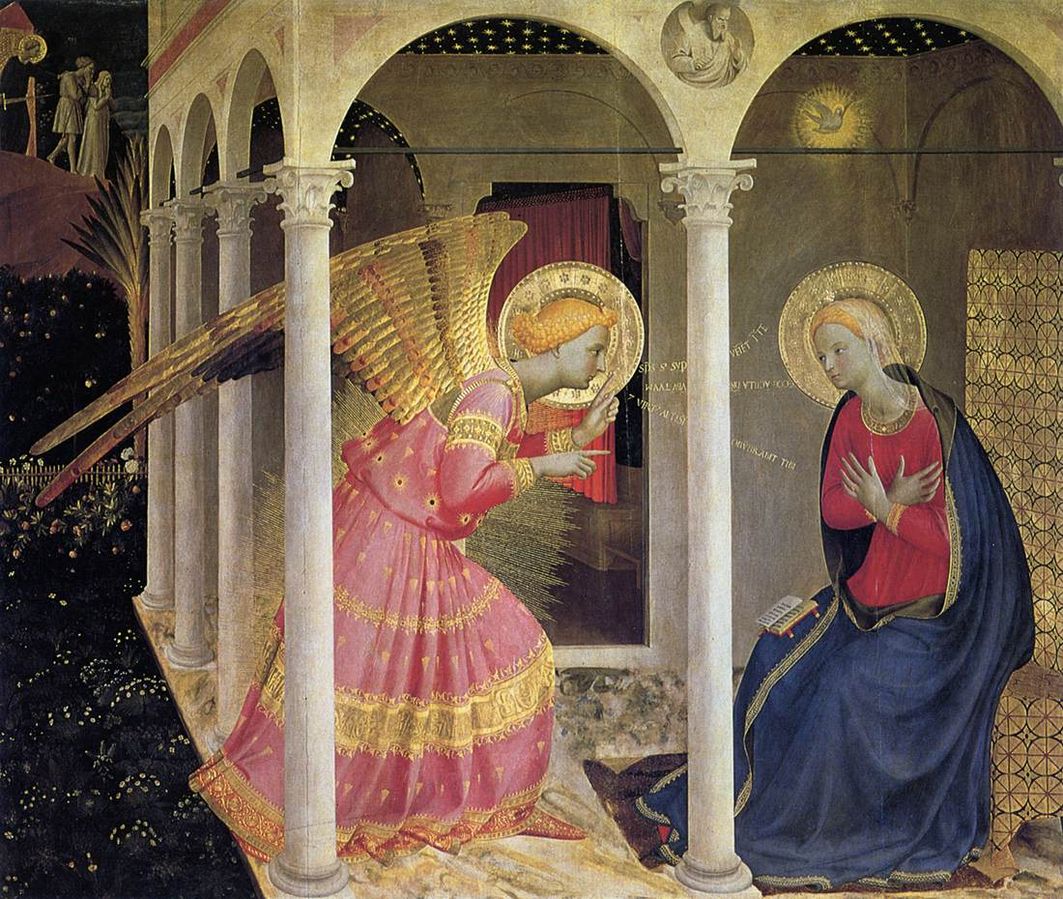 Fra Angelico, segment of the Annunciation, ca. 1433-34, The Diocesan Museum of Cortona, Cortona, Italy[/caption] [caption id="attachment_15279" align="aligncenter" width="640"]
Fra Angelico, segment of the Annunciation, ca. 1433-34, The Diocesan Museum of Cortona, Cortona, Italy[/caption] [caption id="attachment_15279" align="aligncenter" width="640"]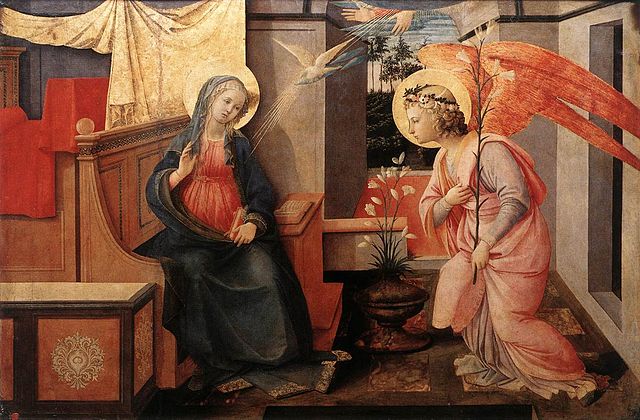 Filippo Lippi, Proclamation, ca. 1445-fifty, Doria Pamphilj Gallery, Rome, Italia[/caption] The color blue symbolizes heavenly grace, which is why the Virgin Mary is usually depicted in robes of the colour. [caption id="attachment_15361" align="aligncenter" width="1024"]
Filippo Lippi, Proclamation, ca. 1445-fifty, Doria Pamphilj Gallery, Rome, Italia[/caption] The color blue symbolizes heavenly grace, which is why the Virgin Mary is usually depicted in robes of the colour. [caption id="attachment_15361" align="aligncenter" width="1024"]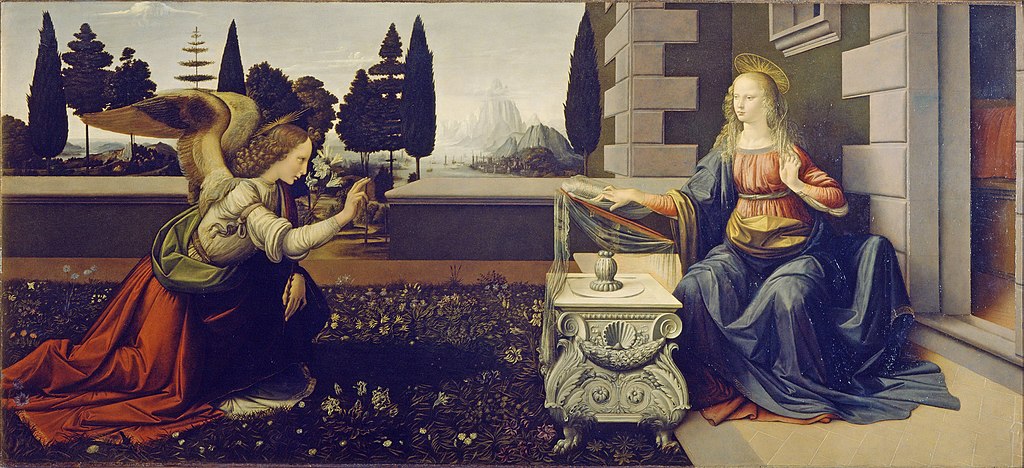 Leonardo Da Vinci, The Annunciation, 1474, The Uffizi Gallery, Florence, Italy[/caption] The nimbus becomes more ethereal, every bit opposed to the obvious disks above the heads of religious figures, such as saints, angels, and Christ. [caption id="attachment_15362" marshal="aligncenter" width="591"]
Leonardo Da Vinci, The Annunciation, 1474, The Uffizi Gallery, Florence, Italy[/caption] The nimbus becomes more ethereal, every bit opposed to the obvious disks above the heads of religious figures, such as saints, angels, and Christ. [caption id="attachment_15362" marshal="aligncenter" width="591"]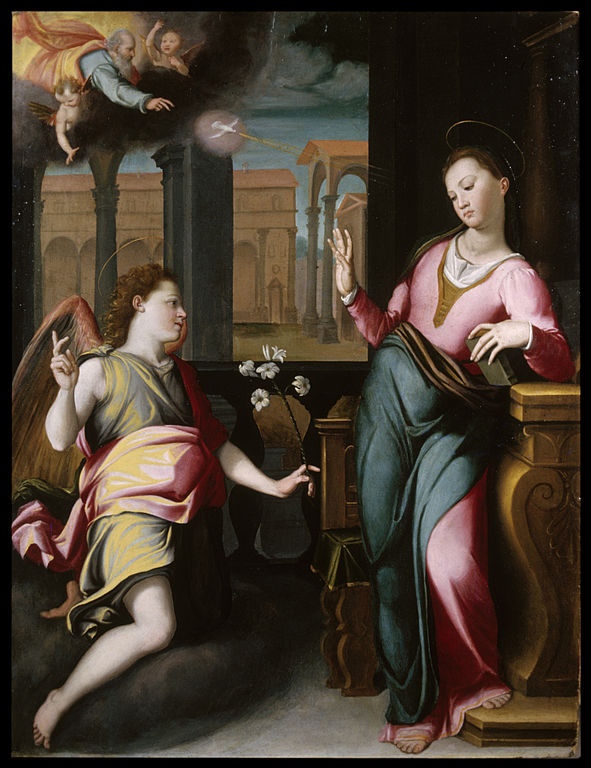 Santi di Tito, The Annunciation, ca. 1580, The Walters Art Museum, Baltimore, USA[/caption]
Santi di Tito, The Annunciation, ca. 1580, The Walters Art Museum, Baltimore, USA[/caption]
What is it that draws us to this theme?
Is it the mysticality surrounding Christ's nascency? The innocence of the angel Gabriel in juxtaposition to a young unwed, virgin mother? The simplicity of the scene(due south)? The use of the color gold? Whatever it is, it has enthralled artists and art historians akin for nearly 10 centuries, myself included. And although mod artists take succeeded in translating this theme into modern times, as seen beneath, the Medieval and Renaissance artists are nonetheless property information technology downwards with some of the almost amazing and cute representations of a religious text. [explanation id="attachment_15382" align="aligncenter" width="thou"]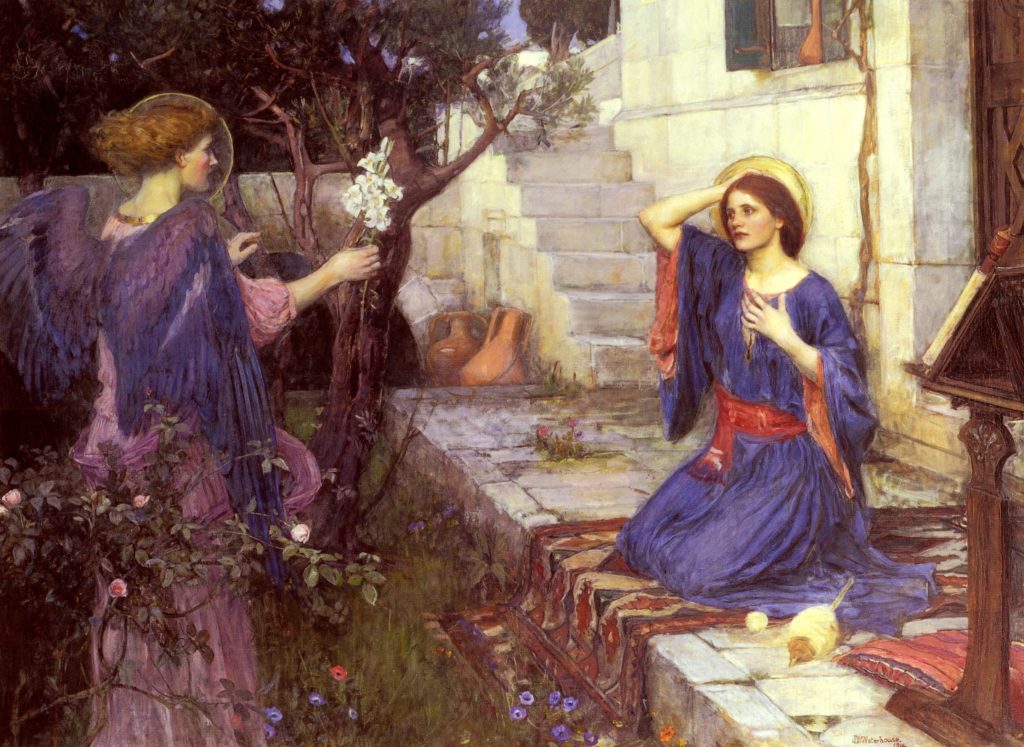 John William Waterhouse, The Proclamation, 1914, individual collection[/explanation] [caption id="attachment_15286" align="aligncenter" width="1140"]
John William Waterhouse, The Proclamation, 1914, individual collection[/explanation] [caption id="attachment_15286" align="aligncenter" width="1140"] Jacek Malczewski, Annunciation, 1923, National Museum, Warsaw, Poland[/caption]
Jacek Malczewski, Annunciation, 1923, National Museum, Warsaw, Poland[/caption]
Find out more:
- The Proclamation from a book of hours for Charles of France by Margaret B. Freeman
[easyazon_image align="none" height="160" identifier="0714844470" locale="United states" src="https://www.dailyartmagazine.com/wp-content/uploads/2018/08/51H0a9HA8EL.SL160.jpg" tag="dailyartdaily-xx" width="132"]
Source: https://www.dailyartmagazine.com/annunciation-in-medieval-and-renaissance-christian-art/
Post a Comment for "Analysis of the Annunciation by Leonardo Da Vinci Connection to the Renissance Themes in Art"